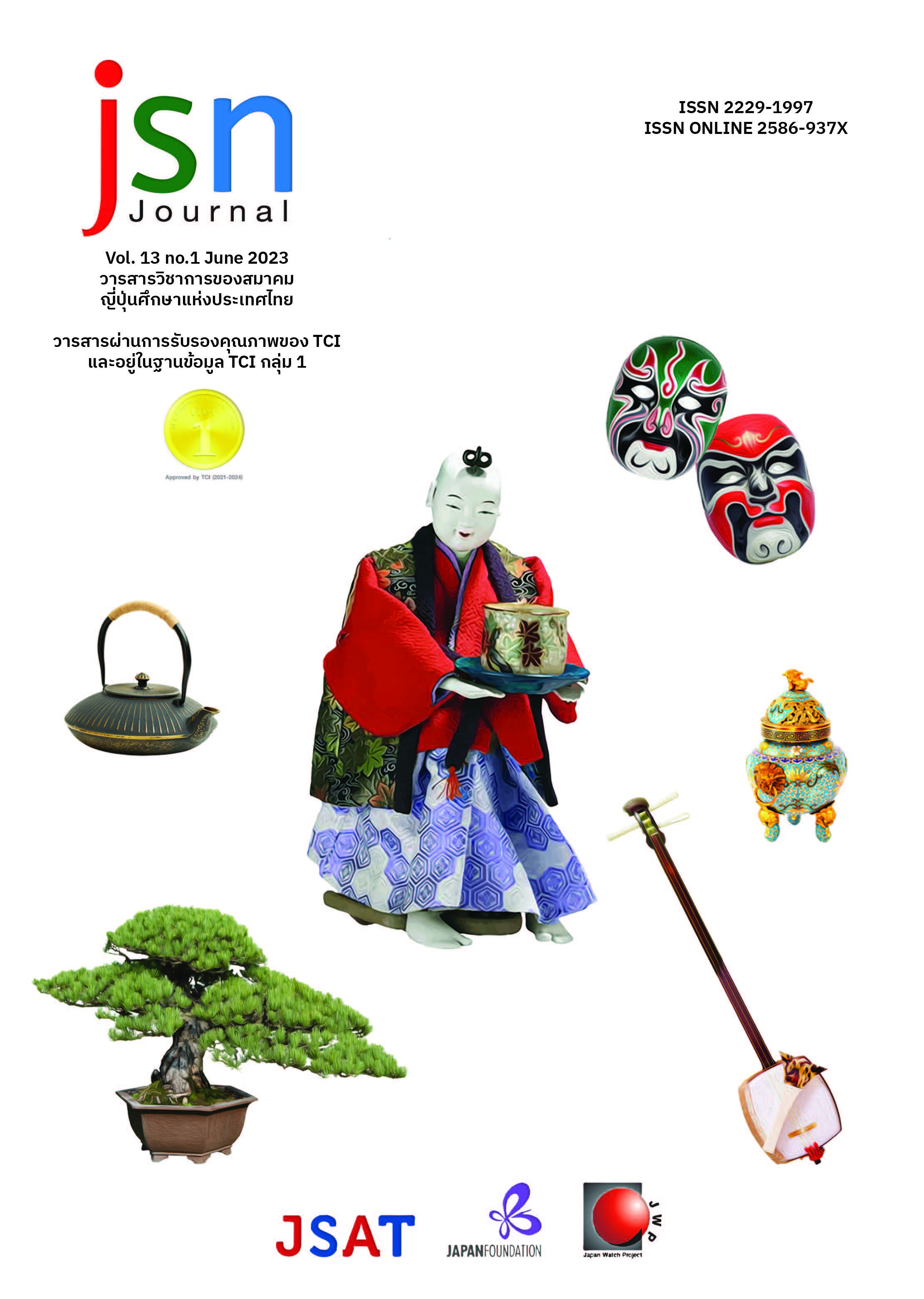Nature Imagery in Hanalei Bay by Murakami Haruki
Main Article Content
Abstract
This article studies nature imagery in Murakami Haruki's short story, "Hanalei Bay," published in the author’s Tokyo Mysterious Story Collection. The results are that the nature imagery there is linked to “Hanalei Bay,” in addition to a dichotomous portrait of nature as harsh and deadly, as when the protagonist Sachi’s son Takashi dies in a shark attack. Nature is also depicted as a site for psychological solace, where Sachi recovers from mourning. In addition, in order to create a perplexing atmosphere associated with the book’s title, the spirit of a young one-legged Japanese surfer is described. From another viewpoint, the story’s conundrum might be Sachi's coincidental meeting with two young Japanese men and “giving them a lift,” reawakening her maternal instincts and reviving her true identity. In this way, she accepts her grief, forgives herself, and allows life to go on. Apart from “Hanalei Bay,” the dichotomous nature image is also portrayed in Murakami's “Thailand.” Both of these stories express a parallel nature acceptance and protagonists resolving psychological challenges.
Article Details

This work is licensed under a Creative Commons Attribution-NonCommercial-NoDerivatives 4.0 International License.
ข้อความและข้อคิดเห็นต่างๆ ในบทความเป็นของผู้เขียนบทความนั้นๆ ไม่ใช่ความเห็นของกองบรรณาธิการหรือของวารสาร jsn Journal
References
มูรากามิ ฮารูกิ (2558). อาฟเตอร์เดอะเควก บุตรหลานพระเจ้าล้วนเริงระบำ. [ 神の子どもたちはみな踊る ] (คมสัน นันทจิต,
ผู้แปล). กรุงเทพฯ : สำนักพิมพ์กำมะหยี่. (ต้นฉบับพิมพ์ ปี ค.ศ. 2000)
มูรากามิ ฮารูกิ (2556). ลึกลับ.โตเกียว.เรื่องสั้น. [ 東京奇談集 ]. (สร้อยสุดา ณ ระนองและคณะ, ผู้แปล), กรุงเทพฯ : สำนักพิมพ์
กำมะหยี่. (ต้นฉบับพิมพ์ ปี ค.ศ. 2014)
Hansen, G. M (2010). Murakami Haruki’s female narrative: Ignored works show awareness of women’s issues.
Japan studies association journal, 8, 229-238.
Murakami, H (2007). Blind Willow, Sleeping Woman. (Gabriel. P, and Rubin. J,Trans.), London : Vintage books.
(Original work published 1980)
加藤典洋 (2009).『村上春樹 イエローページ3』東京:幻冬舎.
黒古一夫 (2007).『村上春樹 :「喪失」の物語から「転換」の物語へ』 東京:勉誠出版.
重岡徹 (2006).「村上春樹『東京奇譚集』論」『別府大学国語国文学』48, 21-35.
津久井伸子 (2007).「村上春樹『東京奇譚集』―家族という呪縛」『宇都宮大学国語教育学会』18, 12-30.
藤城孝輔 (2021).The Representation of Masculinity and the Politics of the Gaze in the Film Adaptation of Hanalei
Bay. THE BULLETIN of INTERNATIONAL INSTITUTE for EDUCATION, 32, 41-53.
細谷博 (2008).「減速された神秘、仕事する者たち--村上春樹『東京奇譚集』」『南山大学日本文化学科論集』
, 1-23.
堀口真理子 (2013).「村上春樹『東京奇談集』における偶然性―「品川猿」の眠りと覚醒」『相模国文』40, 74-86.
宮脇俊文 (2021).「村上春樹「ハナレイ・ベイ」と戦後日本人の歴史認識」『成蹊大学経済経営論集』52(1), 33-51.
村上春樹 (2000).『神の子どもたちはみな踊る』東京:新潮社.
村上春樹 (2014).『東京奇談集』東京:新潮社.
藪添隆一 (2019).「村上春樹「ハナレイ・ベイ」 : 臨床心理学的一考察」『京都光華女子大学京都光華女子大
学短期大学部研究紀要』57, 137-150.
葉夌 (2014).「村上春樹『東京奇譚集』論―「共時性」・「受容」と奇譚の生成―」『国語国文学研究』49, 224-239.


